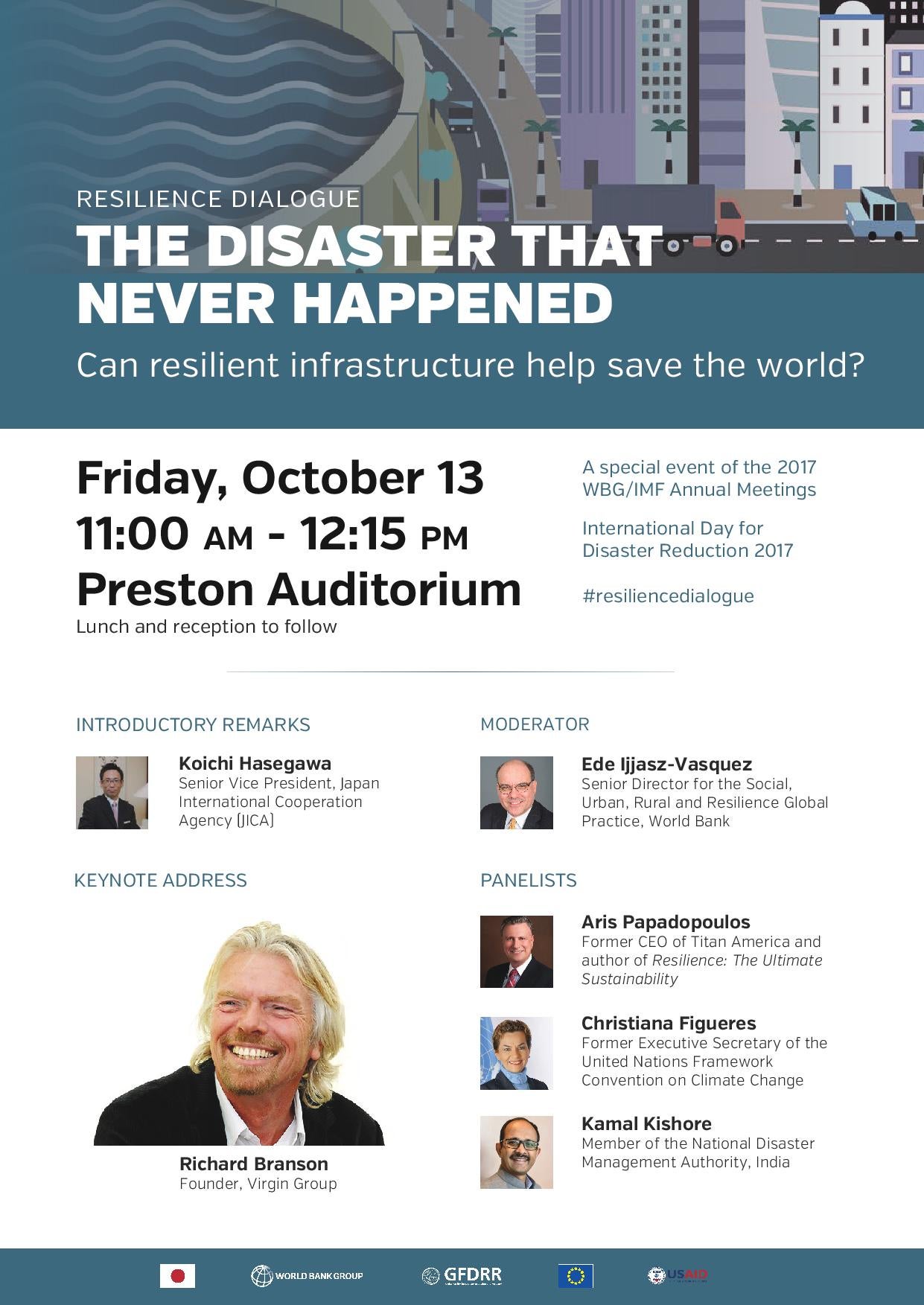
Image credit: NOAA
Unfortunately, scenes like these are becoming more routine. The impacts of climate change are becoming increasingly visible , and rapid urbanization is concentrating risk in vulnerable regions of the world.
Just consider the following statistics:
- Up to 1.4 million people per week are moving into urban areas, with 90% of this growth happening in Africa and Asia.
- According to UN-Habitat, more than 880 million urban residents are estimated to live in urban slums, where the concentration of climate and disaster risk is highest.
- An estimated 875 million schoolchildren live in earthquake-prone regions of the world.
- Sea-level rise in the 136 largest coastal cities could result in losses of $1 trillion or more per year by 2050.
- Over 60% of countries with the highest losses from disaster events are small island states – with damages of up to 9% of GDP.
- Without major investments in resilience, climate change may push up to 100 million people into poverty by 2030, according to the “Shock Waves” report.
This is an admittedly bleak picture. But another important statistic is relevant here – over the next 20 years, humans will build more infrastructure than what has been built over the last 2,000 years. The “Investing in Urban Resilience” report, for example, estimates that global infrastructure needs at more than $5 trillion per year. As the built environment provides the first line of defense against natural hazards, we are living through a rare opportunity to lock in either resilience or risk in many fast-growing parts of the globe.
Much is being done by country governments and development partners in this regard. At the World Bank, investment in urban resilience has averaged $2 billion annually over the last five years, creating a portfolio of more than 70 projects in over 35 countries. Our Global Program for Safer Schools, partnering with a range of academic, civil society, and development actors, is working to ensure safer learning environments and minimized disruption to educational services for millions of students. We are also working closely with the Government of Japan on scaling up investments in other high-quality, disaster-resilient infrastructure, and are exploring the co-benefits of investing in ‘green infrastructure’ projects like mangrove forests, urban parks, and other nature-based solutions for climate and disaster risk.
The infrastructure needs of the coming decades dwarf the efforts of any one institution. To bring resilient infrastructure investments to scale, a sustained and coordinated effort on behalf of major development partners, country governments, and the private sector will be crucial. To better explore this important topic, the Global Facility for Disaster Reduction and Recovery (GFDRR), the World Bank, the Government of Japan, the European Union, and USAID are hosting a special instance of the Resilience Dialogue series on International Day for Disaster Reduction (Friday, October 13th) alongside the 2017 World Bank/IMF Annual Meetings, featuring a keynote by Richard Branson, Founder of the Virgin Group.

Related:
- Subscribe to our Sustainable Communities newsletter
- Follow us on Twitter (@WBG_Cities) and Flipboard



Join the Conversation